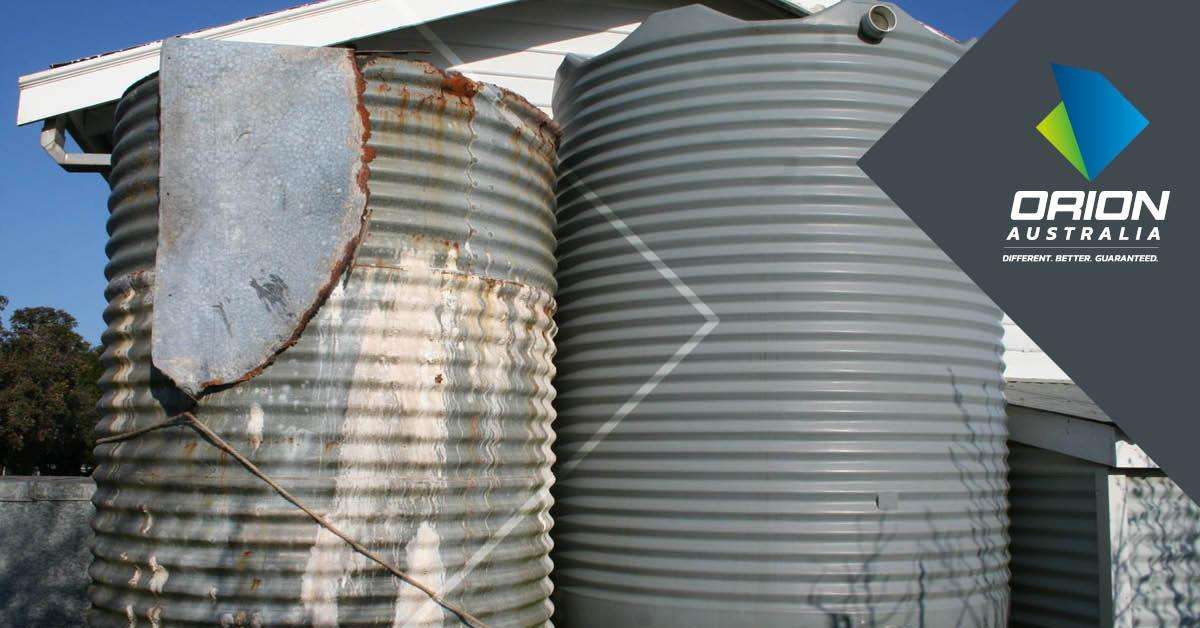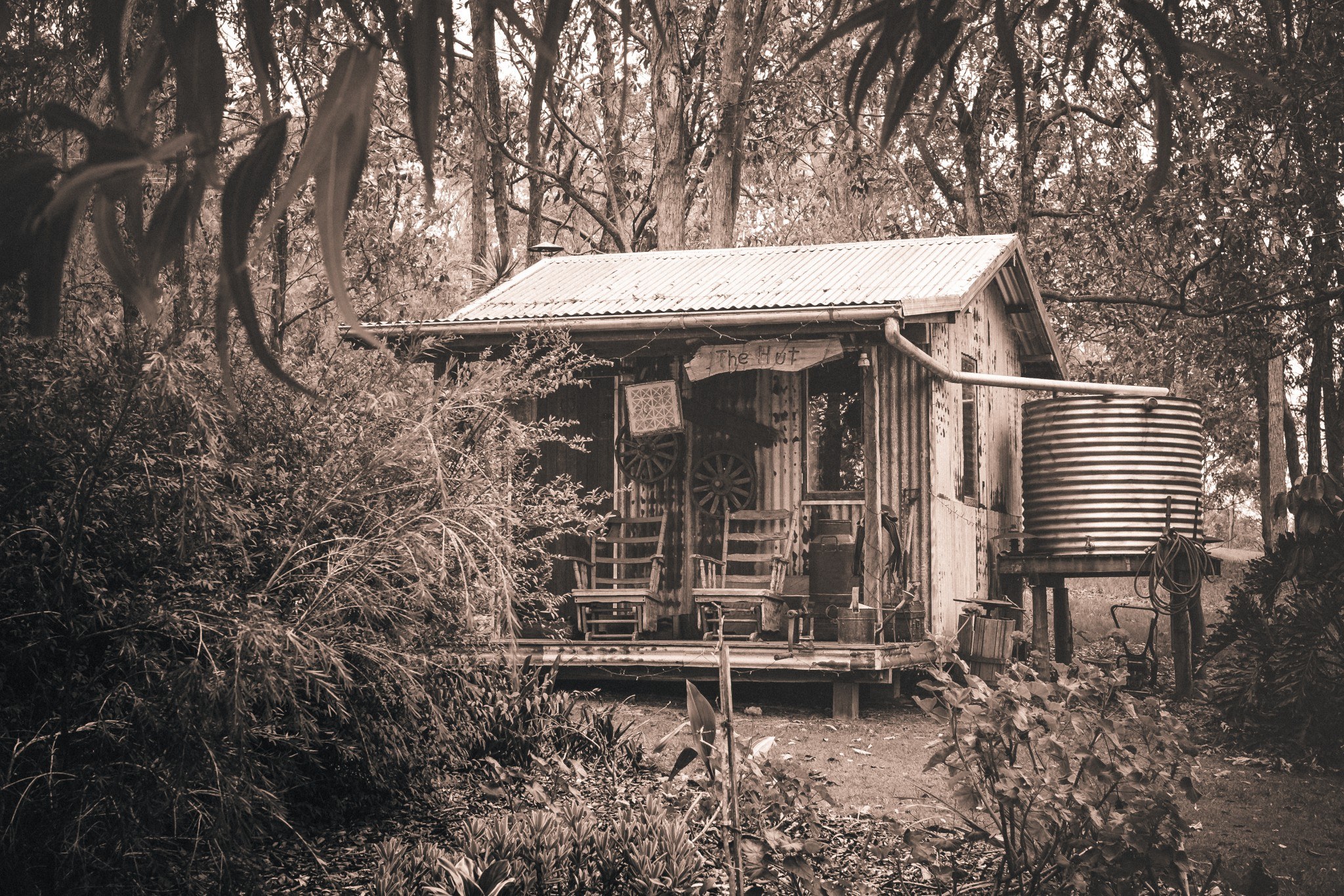09 September 2022
History of Rainwater Tanks
(lit. container or vessel in which to store precipitation; the outback bathtub comes with drinking water storage)

It ranks up there with the outback dunny, snags in bread and vegemite. It’s ironic. In the right setting, it’s even picturesque. The humble corrugated rainwater tank is about as Aussie as it gets!
The fact is that while there are lots of things we can do without, water isn’t one of them. We all learned at school that it’s one of the three basic necessities for life - shelter, food and water – so, for as long as there have been people, water supply and storage have been essential. Actually, especially for people in hotter climates (including the Australian outback), a reliable water source can be the difference between life and death.
If you’re like most of us, you’ve probably never wondered about the history of rainwater tanks. Well, we decided to do a little bit of old-fashioned research, and here’s what we turned up:
A Brief History of Rainwater Tanks in Australia
Galvanized Water Tanks
We’re talking about the classic corrugated tank that was riveted together and sealed with lead solder. The silent workhorse that sat (or maybe still sits) out the back of old homesteads and farm sheds, and never got any attention, even though it played an important role in everyday life!

When did these metal water tanks start making their mark on the Australian landscape?
Corrugated iron first hit the scene in Britain towards the end of the 1920s as a new and innovative building material. Its popularity grew rapidly and this product was soon exported to all the colonial empires – corrugated iron was easy to use, easy to transport and reliable.
In Australia, the era of the gold rush saw Melbourne become the pre-fab capital of the world, with corrugated iron being one of the most widely used building materials.
In 1857, John Carter of Melbourne patented and began manufacturing corrugated iron water tanks in Little Bourke Street, and so an iconic slice of Australian history was born...
Moving on to 2022…
Corrugated steel rainwater tanks are still a popular choice in domestic, rural and industrial situations. Why? Because they work. Serviceable for many years, the good old steel tank will be around for years to come - they’re a reliable and safe investment.
The non-porous nature of steel means that water stored in these tanks may be less susceptible to bacterial contamination than water stored in other tanks, such as concrete or fibreglass.
In more recent years, the development of AQUAPLATE® steel has taken the value of steel water storage tanks up a notch. The addition of a thin polymer film to the interior surface of the steel means that the product is excellent for the storage of drinking water and meets the stringent AS/NZS4020:2018 requirements.
At Orion Australia we don’t cheat on materials: we construct metal tanks using top-quality Australian AQUAPLATE® steel and Z600 galvanized steel. Each join is riveted using modern self-piercing riveting technology and every seam and rivet point inside the tank are sealed using a flexible food contact approved silicone sealant (back in the day, the sealing was done with lead solder, but for health and safety reasons, we don’t use that process now).
So, it started with steel tanks, but nowadays there are several other types of rainwater storage tanks which are popular in Australia too:
What Other Types of Tanks are Popular in Australia, and Why?
Poly Rainwater Tanks
Poly tanks have been around for a few decades now, and they’ve also become part of modern Australia. And there are a few reasons that they’re so popular:
- Lightweight: compared with a steel tank, an empty poly tank is a lot lighter and can often be manhandled into position without the use of a crane.
- Longevity: The typical lifetime of a poly tank is… a lifetime! There are many poly tanks that have been in service for over 40 years, and we’re still waiting to see how long they last!
- Food-grade Polyethylene: when it comes to storing water for drinking or food manufacture, there are stringent standards that have to be met. Orion Australia manufactures tanks using top-quality, food-grade polyethylene that complies with AS 4020.
- Choice of Colour: tanks can be manufactured in nearly any colour you want!
- Choice of Profile: Modern or Traditional? Orion Australia manufactures tanks in several different profiles, allowing customers to pick a style that compliments their existing home or building.

We’ve all seen what happens to ice-cream buckets and plastic pots when they’re left out in the sun, so what stops this from happening to poly rainwater tanks?
The polymer used to construct poly rainwater tanks have UV stabilizers added to it, to ensure that it can withstand decades of exposure to the sun and weather without breaking down. It also contains colourfast pigment to ensure that the tank doesn’t fade over time.
Fibreglass Rainwater Tanks
Fibreglass rainwater tanks have been manufactured in Australia for many years now, and although they aren’t as common as other types of tanks, they do have a few advantages:
- Lightweight: fibreglass tanks are comparatively light, which makes them relatively easy to transport
- Colour: should you wish to change the colour of your tank, a fibreglass one can be painted
One disadvantage of the fibreglass tank is that the walls are rigid and can become brittle, making them more susceptible to cracking. However, with the correct coatings and treatment, you could reasonably expect your fibreglass tank to last a good 30+ years.
Concrete Rainwater Tanks
Concrete tanks are definitely built to last. They’re solid. They’re easy to get. And they’re budget-friendly.
Concrete water tanks remain a popular option in Australia for all of the above reasons. Most manufacturers have plenty of stock, and if you’re not concerned about aesthetics, you can generally get something pretty quickly.
They can be painted too, which means that you can colour your tank to blend in, or turn it into an artistic feature!
However, installation isn’t always quite so simple: concrete tanks are extremely heavy and require some serious lifting power to install! And it’s important to note that if anything goes wrong, a concrete tank is nearly impossible to properly repair.
Want to know more about different types of tanks? Flick us a message here or call us today on 1800 752 784 and chat to one of our team.
We understand water harvesting and we can help you find the perfect solution for your water storage needs.


